Rearmament of Polish artillery
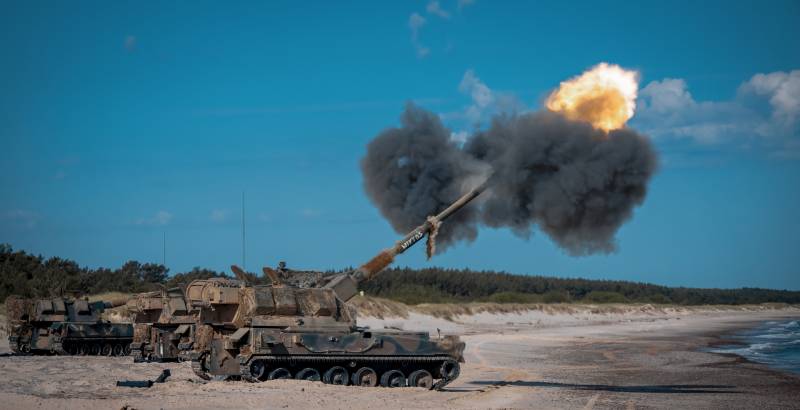
155-mm self-propelled gun AHS Krab. Photo by Huta Stalowa Wola
Currently, the Polish ground forces have quite numerous and well-developed artillery. Several years ago, the country's military and political leadership announced their intention to modernize artillery units and transfer them to modern weapons and equipment. Some of these plans have already been completed, while for others the necessary contracts have been concluded and the corresponding work is underway.
Current status
According to the reference book The Military Balance 2023, at the beginning of this year the Polish army had more than 770 artillery systems of all types. A year earlier, the total number of artillery was estimated at 750 units. Moreover, during 2022-23. There were constant fluctuations in numbers. The army received new gun and rocket systems, and at the same time transferred old models to the Kyiv regime as assistance. However, at the end of last year, the equipment received turned out to be more than written off. How the situation will change by the end of 2023 is still unknown.
The basis of Polish artillery is made up of barrel systems in the amount of more than 420 units. It is curious that howitzer artillery has been completely transferred to self-propelled models; towed guns have been removed from service. The most popular in this class are still the Soviet 2S1 Gvozdika self-propelled guns with 122 mm guns - up to 230 units. There are about 152 M-110 Dana self-propelled guns in the Soviet 77 mm caliber.
The transition to the NATO caliber 155 mm continues. Shells of this kind are used by Polish self-propelled guns AHS Krab in quantities of at least 60-62 units. Procurement of South Korean K9A1s is underway; By the beginning of the year, 24 such products were received, and later new batches were delivered.
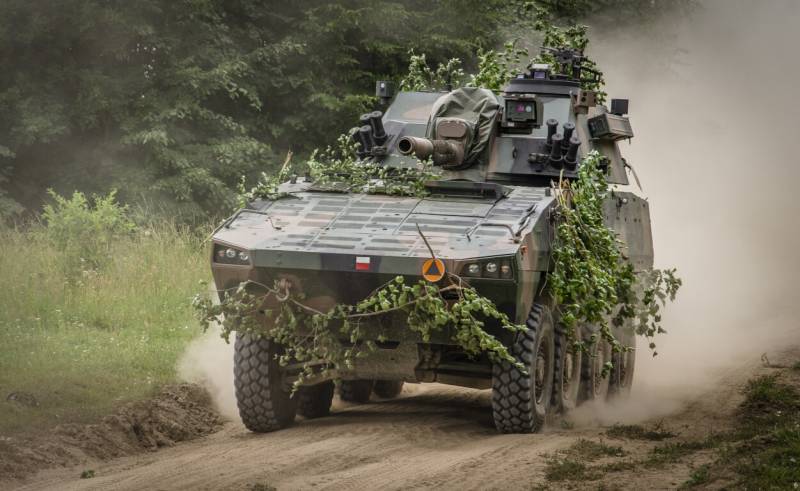
Rak self-propelled mortar on Rosomak chassis. Rosomak SA Photos
Mortar units have up to 170 units. weapons in 120 mm caliber. The main mortar to date has become the self-propelled SMK-120 Rak (90 units). Several dozen Soviet towed mortars M-120 and 2B11 also remain in service.
Until the beginning of this year, the Polish army's rocket artillery was represented only by 122 mm systems in the amount of approx. 180 units The most popular were the Soviet BM-21 and their Polish copy WR-40 - 75 units each. There were also fewer than 30 RM-70 products.
During the year, the size of the MLRS fleet increased significantly. Thus, in May, the first batch of American M142 HIMARS combat vehicles arrived in Poland. In the near future they planned to receive 18 units. such technology. A few weeks later, in June, South Korea sent the first 14 K239 Chunmoo vehicles. New batches of such equipment are expected in the near future.
In the process of updating
Thus, the Polish army has a large number of different artillery systems of old and new types. The leading place in the existing fleet is occupied by Soviet-style combat vehicles and systems, incl. Soviet made. Thus, the 122 and 152 mm caliber systems account for approx. 80% of the fleet is self-propelled guns, and in rocket artillery the share of Soviet-style systems is even higher. Against this background, mortars stand out favorably - more than half of such weapons are modern “Raki”.
For a number of objective reasons of a different nature, the military and political leadership of Poland quite a long time ago decided to re-equip the artillery and transfer it to NATO standards of weapons and ammunition. To date, several large contracts have been concluded for this purpose, which are already being implemented and allow us to take the first steps in the context of upgrading artillery.
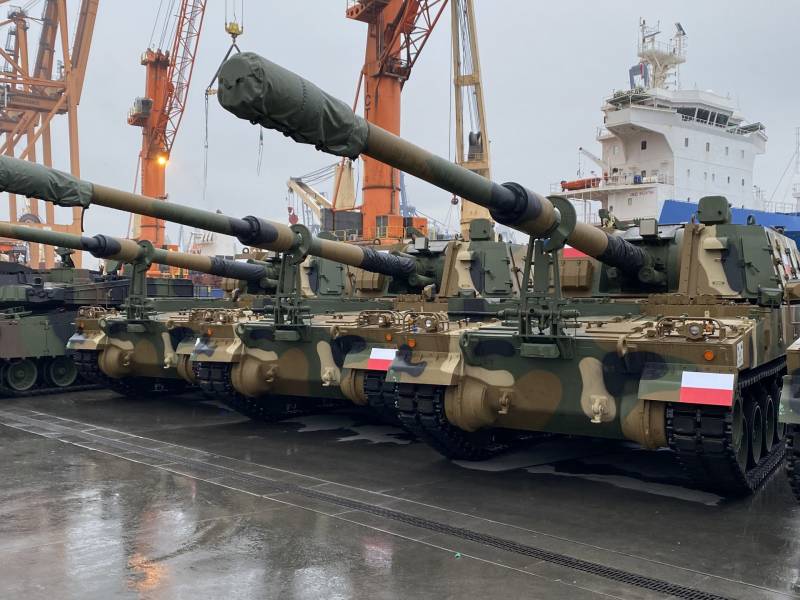
South Korean-made K9A1 self-propelled guns in a Polish port, December 2022. Photo by the Polish Ministry of Defense
Since the end of the 155s, Polish industry has been engaged in mass production of 122-mm AHS Krab self-propelled guns. Previously, contracts for 48 vehicles of this type were signed and fulfilled. Last year we placed an additional order for 2022 units. It is curious that several dozen “Crabs” were transferred to Ukraine in XNUMX for the purpose of assistance. Some of this equipment has already been destroyed, and Poland will not be able to return it. Because of this, it was decided to issue an additional order.
The production of the AHS Krab self-propelled gun uses a South Korean-designed chassis. Now it is planned to purchase full-fledged combat vehicles from Seoul. In August 2022, a Polish-Korean contract was signed for the supply of 212 K9A1 self-propelled guns. The first batch of such machines arrived in Poland at the end of last year. To date, several more shipments have been sent, and the total number of vehicles in the Polish army has reached 48 units.
In the coming years, Poland and South Korea will prepare production facilities for the licensed production of self-propelled guns. The new plant will be entrusted with the construction of another 460 K9 vehicles in the “PL (A1)” modification. Their production will continue at least until the beginning of the next decade.
The HIMARS MLRS available to Poland were delivered in accordance with the 2019 contract. This agreement provided for the transfer of one divisional set of equipment in the form of 18 combat vehicles, auxiliary equipment, missiles of various models, etc. In May 2022, the Polish government sent a request to the US leadership for new sales. This request was answered positively, and in September 2023 an order for 486 combat vehicles appeared. It is curious that almost all of them will be built on a Polish-made chassis.
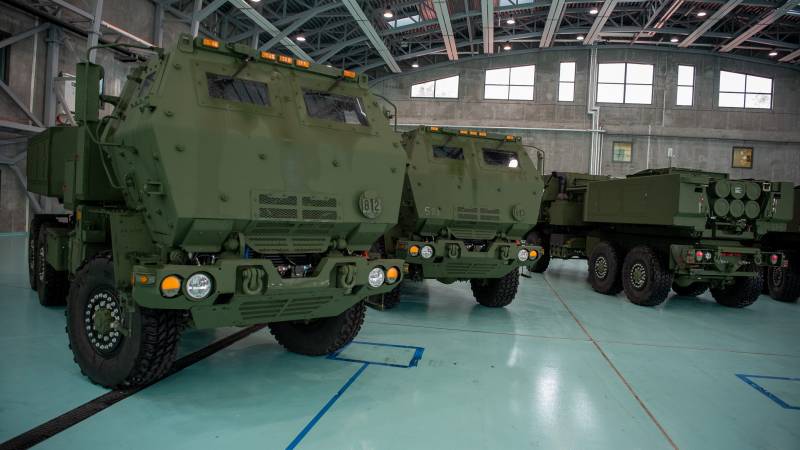
The first batch of M142 MLRS, delivered in May 2023. Photo of the Polish Ministry of Defense
Deliveries of the main batch of M142 MLRS will begin in 2025. With the help of the received equipment, the Polish army plans to form 80 new batteries and thereby significantly increase the firepower of the missile forces. Apparently, as new Highmars are received, the existing MLRS of old types will gradually be written off as unnecessary.
Scope and costs
The current artillery rearmament program is not simple, fast or cheap. In addition, the Polish army is updating not only its fleet of guns and multiple launch rocket systems. Mass purchases of other weapons and equipment are also planned, for which the corresponding expenses are included in the military budget. At the same time, the re-equipment program may turn out to be prohibitively expensive for Poland.
The most expensive will be the re-equipment of rocket artillery units. According to various estimates, the first divisional set of HIMARS systems cost the Polish army approximately $650 million. A new order for several hundred MLRS is expected to cost approx. $10 billion. More than $3,5 billion has been allocated for the purchase of South Korean MLRS.
The cost of South Korean self-propelled guns has not been specified. Last year we signed a framework contract for the supply of K9 self-propelled guns and tanks K2. The total cost of this agreement exceeded $5,7 billion. Most of this money will go towards the purchase of K2 tanks, known for their record price.
The financing of such purchases raises understandable questions. In order to acquire new models and various types of products, Poland has been constantly increasing its military budget in recent years. In addition, it is expected to use borrowed funds. It is interesting that South Korea is considered as the main creditor. Thus, in July, foreign media reported that the Polish Ministry of Defense could receive a loan of $15,6 billion from one of the Korean banks.
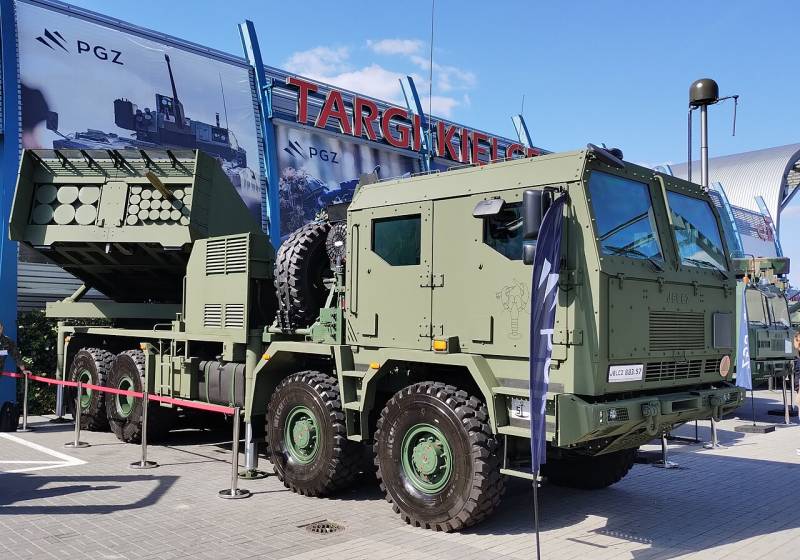
MLRS K239 Chunmoo. Photo: Wikimedia Commons
The procedure for financing the purchase of American MLRS is unknown. Perhaps some of these expenses will be taken into account in the increased military budget, and the rest will be raised through loans.
The volume and cost of planned purchases are predictably subject to criticism. Officials and Polish media have expressed doubts about the ability of modern Poland to pay for all issued contracts, as well as to pay off creditors. It is possible that in the current economic situation, the Polish Ministry of Defense will be forced to reduce the volume of orders and slow down the rearmament process.
A characteristic feature of the plans being implemented is the dependence of Polish rearmament on foreign production. It is proposed to purchase finished foreign products, as well as launch production at our own enterprises. It is expected that this approach will provide some economic and technological advantages. At the same time, there may be certain difficulties associated with dependence on imported products, etc.
Plans and reality
Poland plans to seriously rearm its army and improve all its main indicators. Artillery plays a special role in such rearmament, determining the overall firepower of the ground forces. The purchase of a large number of different combat vehicles and weapons systems has been planned and is beginning, and the first batches of equipment have already arrived in Poland.
How the situation will develop in the future, and whether Poland will be able to fulfill its plans, time will tell. Work on the contracts has just begun, but various problems of one kind or another have already appeared on the horizon. Perhaps, due to various reasons and factors, the situation will develop according to a negative scenario - procurement volumes will decrease, and some contracts may be canceled altogether. However, the Polish leadership is determined and intends to fully carry out the planned rearmament.
Information